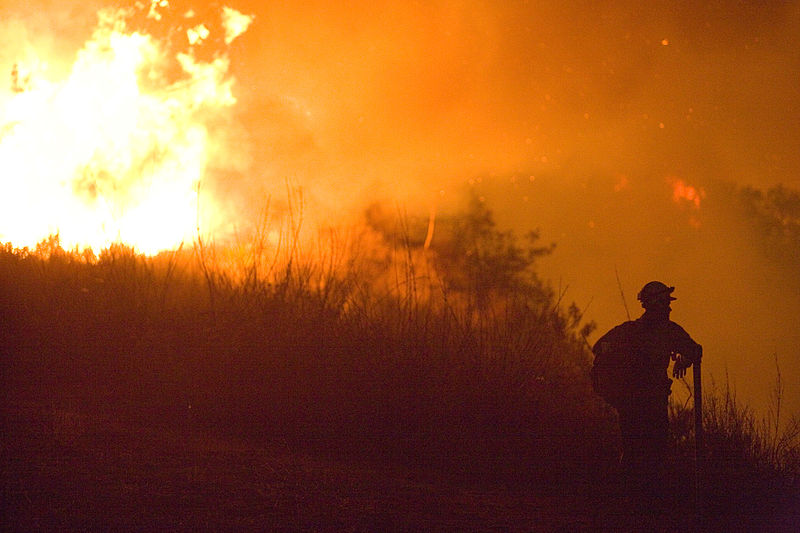Wildfire Season Rages As Climate Impact Worsens
Studying wildfires around the world can help communities address future wildfires in the U. S.
Firefighters work to contain Poomacha fire in 2007.
Nowadays, it seems like something happens in the world which changes it in ways we could not anticipate. Some of the most notable catalysts were the coronavirus pandemic and the many reasons behind the Black Lives Matter movement. Now, another issue is plaguing the world: wildfire season.
Throughout this summer, many fires have burned across the U.S. Most of these wildfires are in California. Recently, a fire known as the Apple fire began to sweep across the state. 8,000 people have been evacuated as a result. As of August 3, it had burned through 26,000 acres of land, making it one of the worst active wildfires in California.
In order to understand the current fires in California, the results of a past wildfire season elsewhere need to be considered. At the end of 2019 and the beginning of 2020, bushfires raged in Australia, ravaging everything in their path. The immediate impact on Australia was devastating. A recent report estimates 3 billion animals were either harmed or killed and 11.46 million hectares were burned. Any attempts to facilitate environmental recovery or repair property damage have been hindered by the coronavirus. Unfortunately, another wildfire season will begin soon in Australia.
These fires were not entirely natural, however. Their destruction was amplified by the effects of climate change. The air was hotter and drier than usual for Australia, making previously wet and humid regions ideal fuel for the flames. One very clear instance of this was the bushfire which destroyed Binna Burra Lodge, which was situated in a relatively wet mountain area. According to an article from The New York Times, the fire “alarmed scientists” because such fires were “extremely rare in the usually cool and wet area.” More and more of Australia is becoming vulnerable to the conflagrations. Because, in Australia, “emissions continue to soar,” so this issue will only get worse in the near future.
Wildfire severity issues are not, however, isolated to Australia. California battles increasingly damaging wildfires as well. According to a study published in 2019, “[i]t is well established that warming promotes wildfire throughout the western United States, particularly in forested regions, by enhancing atmospheric moisture demand and reducing summer soil moisture as snowpack declines.” Increased atmospheric moisture demand directly increases evaporation of water. Both that and reduced summer soil moisture make bushfires faster and stronger than those of the previous season. To make matters worse, the fires themselves are not the only negative impact of the wildfires. Such large wildfires create massive plumes of smoke and ash, which enter the stratosphere to travel unfathomable distances. Excessive amounts of smoke generate their own weather after condensing into pyrocumulus clouds. These clouds produce storms with lightning, but no rain, increasing the likelihood of a new forest fire being started. The fires in Australia produced smoke which travelled around the world. The ashes settled as far as New Zealand. Snow covered in ash has a greater tendency to absorb sunlight rather than reflect it back to space, making the ash contribute to climate change as well. As of August 3, the Apple Fire’s smoke was darkening areas in Arizona significantly. There was not enough to create storms or cause much danger, but it was enough to tint the sky noticeably.

As flames rage across regions of the planet stronger than ever, human impacts on the world become abundantly clear. The added pressure of this issue will surely cost property and lives, only deepening the global crisis. People who live in these dangerous areas must stay safe in an increasingly dangerous world.

Ethan Parab is a senior at Glenbard West and a Tech Specialist of The Glen Bard. In addition to newspaper, he enjoys playing tennis, reading, and computer...





